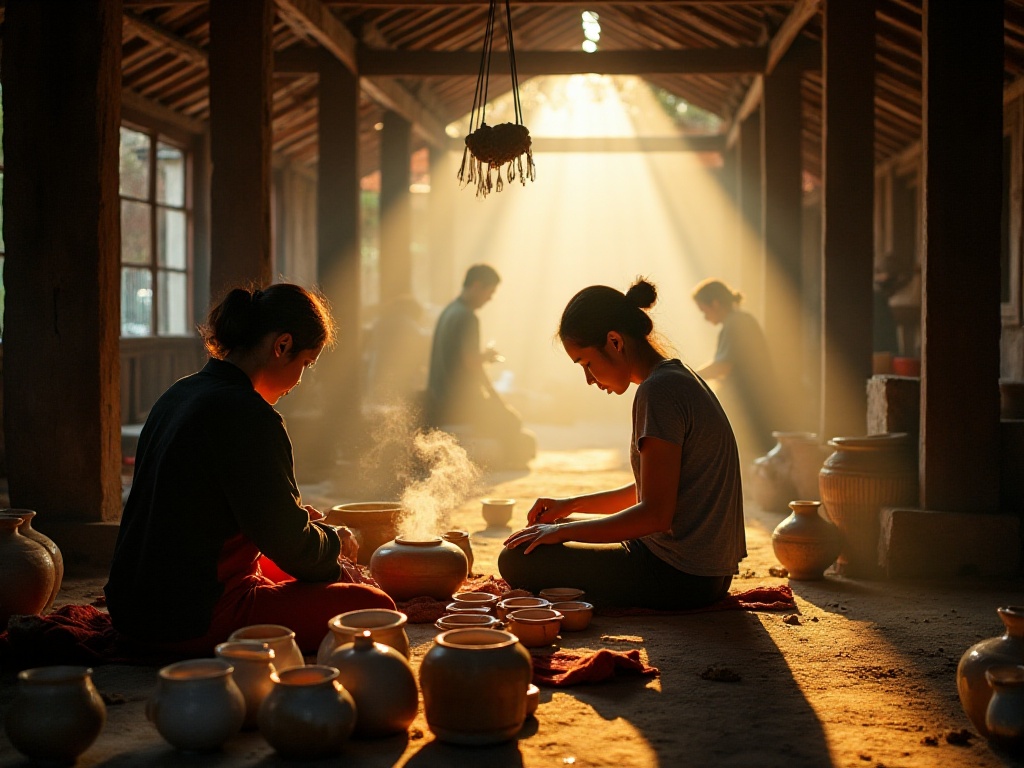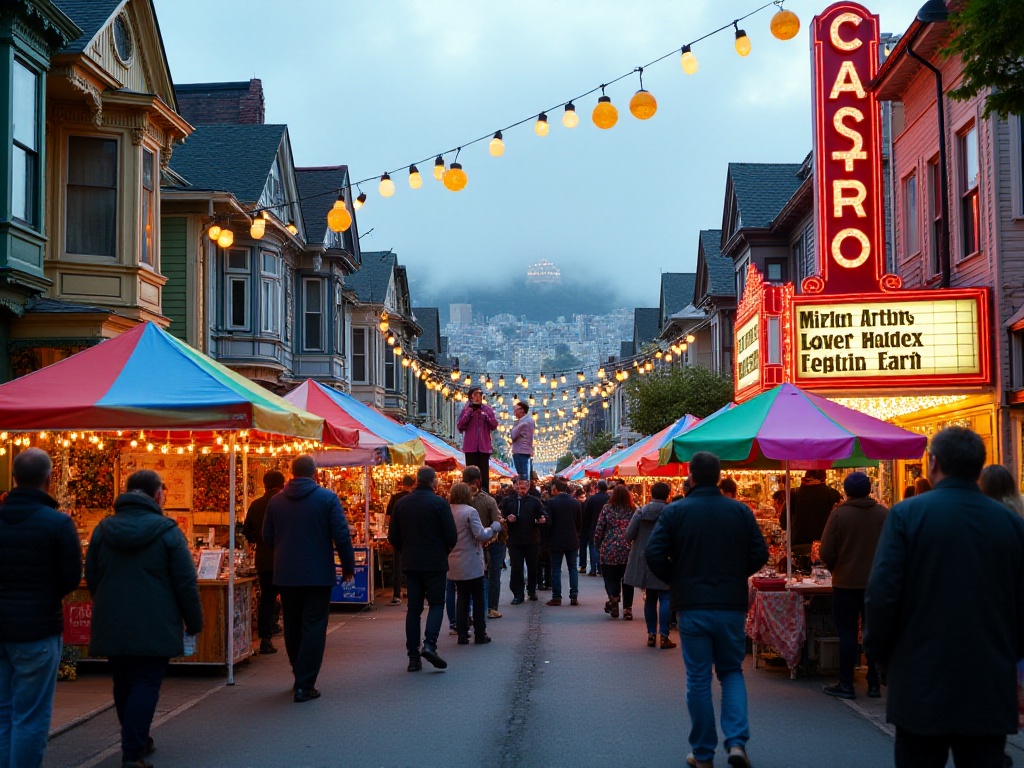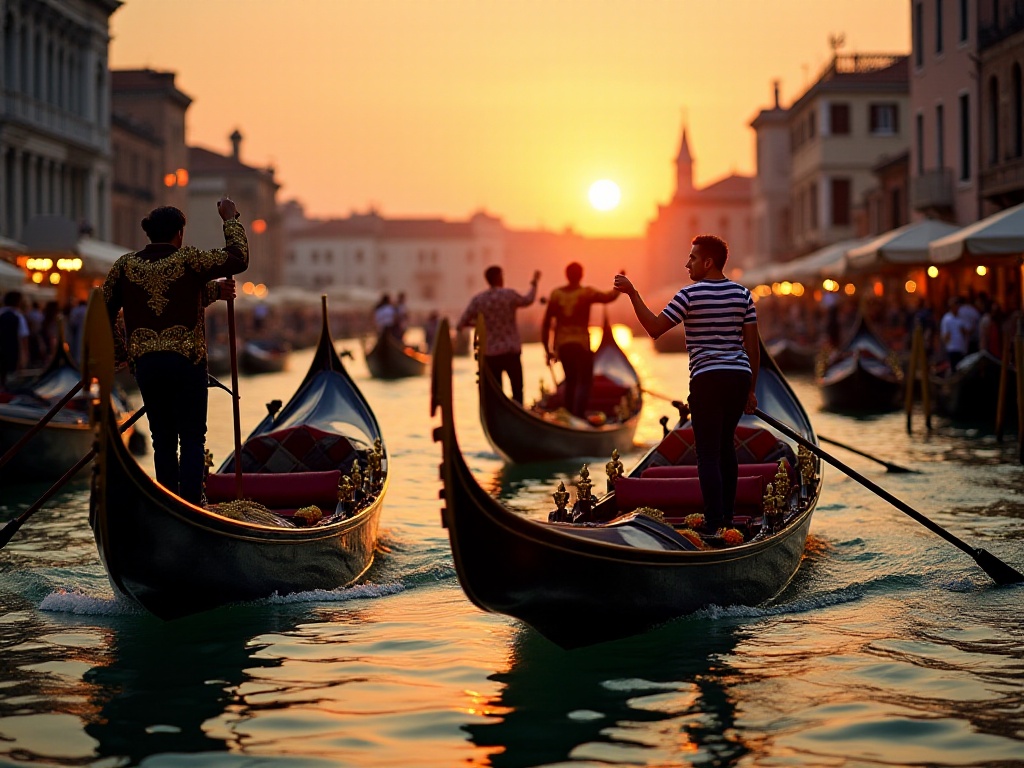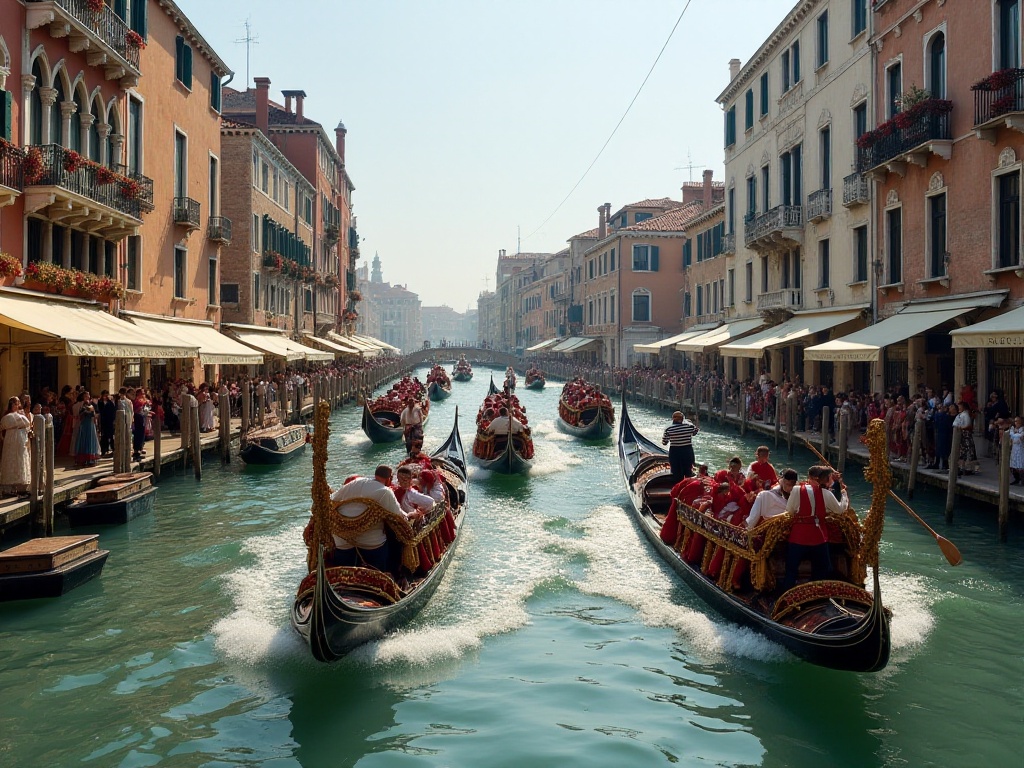Origin
Have you ever wondered why the mask culture of Venice Carnival has continued for over 300 years? As a traveler who deeply loves Venice, I want to share with you my observations during the Venice Carnival and take you into this mysterious masked festival.
I remember being speechless at the sight before me when I first attended the Venice Carnival. Along the canals, people in 18th-century costumes wearing exquisite masks strolled elegantly, as if time had reversed to Venice's golden age.
History
The history of Venice Carnival can be traced back to 1162. It originated as a celebration of the Venetian Republic's victory over Patriarch Ulrich.
During Venice's most prosperous period in the 18th century, the carnival lasted up to 6 months. Venetians spent almost half their time celebrating, walking the streets wearing masks. Masks were not just costumes but products of a social system. Behind masks, nobles could mingle with commoners, lovers could meet secretly, gamblers could spend recklessly, and merchants could conduct business freely without tedious regulations.
Masks
Did you know that mask-making in Venice is an extremely sophisticated craft? Traditional Venetian masks are all handmade from papier-mâché, requiring at least 5 steps to complete. I once visited an artisan who had been making masks in Venice for over 40 years, and he showed me several of the most representative Venetian masks:
Medico della Peste (Plague Doctor): A mask with a long beak, originally worn by doctors during the Black Death in the 14th century. The beak portion was stuffed with herbs to filter air. It has now become one of the most iconic masks of Venice Carnival.
Bauta: This is Venice's most traditional mask, covering the entire face with a protruding chin to facilitate eating and drinking. Interestingly, this mask was legally required for political gatherings in 18th-century Venice.
Colombina: This half-face mask is named after a famous female theater actress and is usually elaborately decorated, tied with ribbons. I've noticed that female tourists particularly love this elegant mask.
Festival
The carnival attracts about 3 million visitors each year. The festival typically begins on the weekend before Lent and lasts about two weeks. The entire city transforms into a huge open-air theater filled with spectacular performances and events.
St. Mark's Square is the central stage of the carnival. Daily performances range from acrobatics and magic to classical concerts. The most impressive is the "Flight of the Angel" ceremony, where an actor playing an "angel" descends from the top of St. Mark's Campanile to the center of the square, a tradition that has continued for over 400 years.
Balls
When discussing Venice Carnival, one cannot ignore Il Ballo del Doge (The Doge's Ball). This is the most luxurious event of the entire carnival, known as "the most glamorous ball in the world."
The ball is held in the 15th-century Pisani Moretta Palace. I was fortunate to attend once, and the experience remains unforgettable. Under massive crystal chandeliers, costumed dancers waltzed while beautiful Venetian masks sparkled in candlelight, creating a fairytale atmosphere.
Tickets range from 500 to 2000 euros, and despite the high prices, they sell out quickly each year. The ball is usually limited to 400 guests to ensure each attendee receives a prestigious experience.
Food
The food during Venice Carnival is also special. Traditional festival sweets called "frittelle" (Venetian fritters) are essential. This pastry reportedly originated in the 13th century, made from flour, eggs, raisins, and pine nuts, crispy outside and soft inside, delicious when sprinkled with powdered sugar.
My favorite is from "Rosa Salva," a historic pastry shop whose frittelle recipe has been passed down for over 200 years. Long queues form during carnival season.
Visiting
If you want to attend Venice Carnival, I recommend booking accommodation at least six months in advance. Venice becomes extremely expensive during the festival, with many hotels fully booked a year ahead.
I recommend staying on the main island to fully experience the carnival atmosphere. The Cannaregio and Dorsoduro districts are good choices, being quieter and more reasonably priced than the San Marco district.
For transportation, Venice's vaporetto (water bus) is the main public transport. Consider buying a multi-day pass for unlimited travel between islands. Note that water buses become very crowded during carnival, so try to travel during off-peak hours.
Tips
Based on my multiple experiences at Venice Carnival, here are some practical suggestions for those planning to attend:
-
Mask Purchase: Buy from legitimate mask shops. Venice has many traditional mask-making workshops. Though more expensive than street vendors, they offer better quality and artistic value. I especially recommend Ca' Macana workshop, where masks are entirely handmade and you can observe the production process.
-
Photography Tips: Venice Carnival is a photographer's paradise. Morning light is best for photography, when costumed models often pose along the canals. Consider bringing a wide-angle lens for more impressive scenes.
-
Costume Advice: To fully immerse in the festival atmosphere, consider renting period costumes and masks. Venice has many professional costume rental shops, with prices ranging from 100 to 500 euros for 1-3 days.
-
Event Participation: Besides the famous Doge's Ball, there are many smaller balls and events to attend. Check the official website, as many events require advance booking.
Reflections
Each time I attend Venice Carnival, I gain new insights. Here, masks are not just decorative items but symbols. They allow people to temporarily shed their everyday identities and find inner freedom in celebration.
Venice Carnival teaches us that sometimes "escape" is a form of wisdom. During this ancient festival, people can temporarily forget real-world troubles and enjoy pure happiness. Perhaps this is why the festival has endured for centuries.
Have you considered experiencing this grand carnival in Venice? Or have you already been? Feel free to share your thoughts and experiences in the comments. Let's discuss the mask legends of this city on water.







